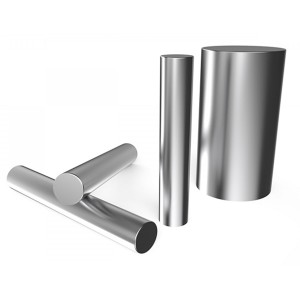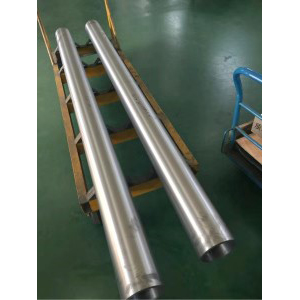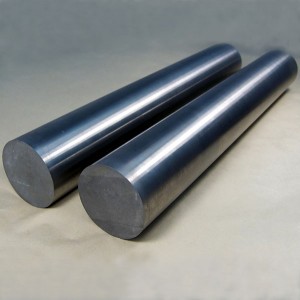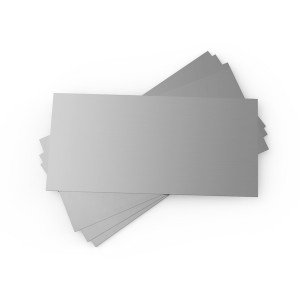99.95 pure tungsten plate polished tungsten sheet
Pure tungsten plate is a high-purity tungsten material with extremely high melting point and hardness, as well as good thermal conductivity and electrical resistance. Its chemical composition is mainly tungsten, with a content greater than 99.95%, a density of 19.3g/cm ³, and a melting point of 3422 ° C in the liquid state. Pure tungsten plates are widely used in various fields due to their excellent physical properties.
| Dimensions | Customisation |
| Place of Origin | Luoyang, Henan |
| Brand Name | FGD |
| Application | Metallurgical Industry |
| Shape | As your drawings |
| Surface | As your requirement |
| Purity | 99.95% Min |
| Material | Pure W |
| Density | 19.3g/cm3 |
| Specificities | high-melting |
| Packing | Wooden Case |

| Main components |
W>99.95% |
|
Impurity content≤ |
|
|
Pb |
0.0005 |
|
Fe |
0.0020 |
|
S |
0.0050 |
|
P |
0.0005 |
|
C |
0.01 |
|
Cr |
0.0010 |
|
Al |
0.0015 |
|
Cu |
0.0015 |
|
K |
0.0080 |
|
N |
0.003 |
|
Sn |
0.0015 |
|
Si |
0.0020 |
|
Ca |
0.0015 |
|
Na |
0.0020 |
|
O |
0.008 |
|
Ti |
0.0010 |
|
Mg |
0.0010 |
|
Material |
Test Temperature(℃) |
Plate Thickness(mm) |
Pre experimental heat treatment |
|
Mo |
1100 |
1.5 |
1200℃/1h |
|
|
1450 |
2.0 |
1500℃/1h |
|
|
1800 |
6.0 |
1800℃/1h |
|
TZM |
1100 |
1.5 |
1200℃/1h |
|
|
1450 |
1.5 |
1500℃/1h |
|
|
1800 |
3.5 |
1800℃/1h |
|
MLR |
1100 |
1.5 |
1700℃/3h |
|
|
1450 |
1.0 |
1700℃/3h |
|
|
1800 |
1.0 |
1700℃/3h |
1. Our factory is located in Luoyang City, Henan Province. Luoyang is a production area for tungsten and molybdenum mines, so we have absolute advantages in quality and price;
2. Our company has technical personnel with over 15 years of experience, and we provide targeted solutions and suggestions for each customer's needs.
3. All of our products undergo strict quality inspection before being exported.
4. If you receive defective goods, you can contact us for a refund.

1. raw material preparation
(Select high-quality tungsten powder or tungsten bars as raw materials for preliminary processing and screening)
2. Drying powder
(Put tungsten powder into an oven for drying to ensure the dryness and stability of the powder,)
3. press forming
(Place the dried tungsten powder or tungsten rod into a pressing machine for pressing, forming the desired plate-like or standardized block shape.)
4. Pre burning treatment
(Place the pressed tungsten plate into a specific furnace for pre firing treatment to make its structure denser)
5. Hot pressing molding
(Place the pre fired tungsten plate into a specific furnace for high-temperature hot pressing to further enhance its density and strength)
6. Surface Treatment
(Cut, polish, and remove impurities from the hot pressed tungsten plate to meet the required size and surface finish.)
7. Packaging
(Pack, label, and remove the processed tungsten plates from the site)
The application fields of pure tungsten plates are very wide, mainly including the following aspects:
Resistance welding machine electrode: Pure tungsten rod is widely used in the production of resistance welding machine electrodes due to its low thermal expansion, good thermal conductivity, sufficient resistance, and high elastic modulus.
Sputtering target material: Pure tungsten rods are also used as sputtering targets, which is a physical vapor deposition technique used to prepare thin film materials.
Weights and heating elements: Pure tungsten rods can also be used as weights and heating elements, suitable for applications that require high density and high heat resistance.
The main body of professional darts: Tungsten alloy is used to make the main body of darts due to its high density and good physical properties.







The temperature of the tungsten plate during hot rolling is a critical factor and should be carefully controlled and monitored. Here are some important notes about temperature:
1. Optimal temperature range: Tungsten plates should be heated to a specific temperature range to facilitate the hot rolling process. This temperature range is typically determined based on the material properties of tungsten and the required mechanical properties of the final product.
2. Avoid overheating: Overheating of tungsten plates can cause adverse changes in their microstructure and mechanical properties. It is important to avoid exceeding maximum temperature limits to prevent material degradation.
3. Uniform heating: Ensuring that the tungsten plate is heated evenly is critical to maintaining consistent material properties across the entire surface. Temperature changes can cause uneven deformation during rolling, resulting in uneven mechanical properties.
4. Cooling rate: After hot rolling, the tungsten plate should be cooled at a controlled rate to achieve the required microstructure and mechanical properties. Rapid cooling or uneven cooling can cause internal stress and deformation in the final product.
5. Monitoring and Control: Continuous monitoring of temperature during hot rolling is critical to make real-time adjustments and maintain required material properties. Advanced temperature control systems can be used to ensure precise regulation of heating and cooling processes.
Overall, the temperature of the tungsten plate during hot rolling plays a vital role in determining the final properties of the rolled product, and care should be taken to maintain appropriate temperature conditions throughout the process.
There are many reasons for breakage in pure tungsten plate processing, including:
1. Brittleness: Pure tungsten is inherently brittle, especially at room temperature. During processing such as hot rolling or cold working, the material may crack or break due to its brittleness.
2. High hardness: Tungsten has high hardness, and if the tools and equipment are not designed to handle this hard material, it will easily crack and break during the machining process.
3. Stress concentration: Improper handling or processing of pure tungsten plates will cause stress concentration in the material, leading to the initiation and expansion of cracks, and eventually fracture.
4. Insufficient lubrication: Insufficient lubrication during processing operations such as cutting, bending or forming can cause increased friction and heat, leading to localized weakening and potential fracture of the tungsten plate.
5. Improper heat treatment: Inconsistent or improper heat treatment of pure tungsten plates can lead to internal stress, uneven grain structure, or embrittlement, all of which can lead to fracture in subsequent processing steps.
6. Tool wear: Using worn or incorrect cutting tools during machining or forming operations can cause excessive tool stress and generate heat, resulting in surface defects and potential breakage of the tungsten plate.
In order to reduce breakage during pure tungsten plate processing, the material characteristics must be carefully considered, appropriate tools and equipment must be used, proper lubrication must be ensured, processing parameters must be controlled, and appropriate heat treatment processes must be implemented to minimize internal stress and maintain the material. of integrity.












